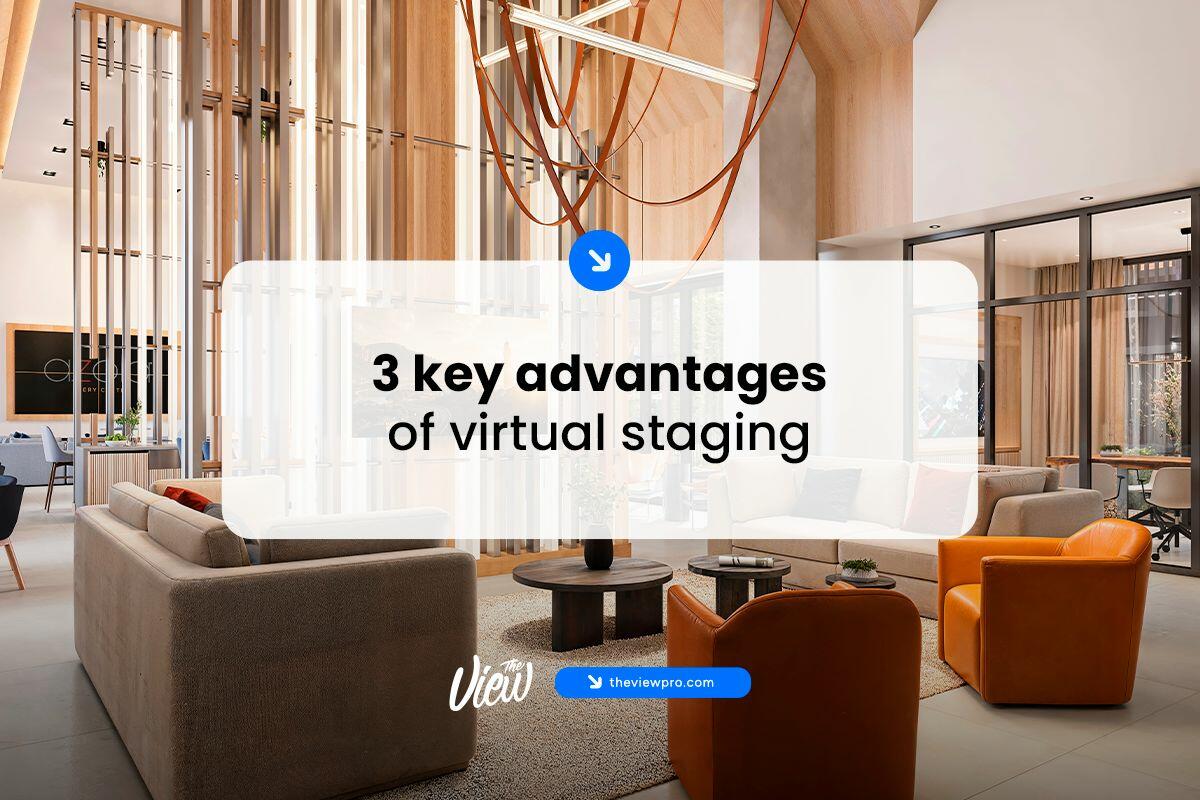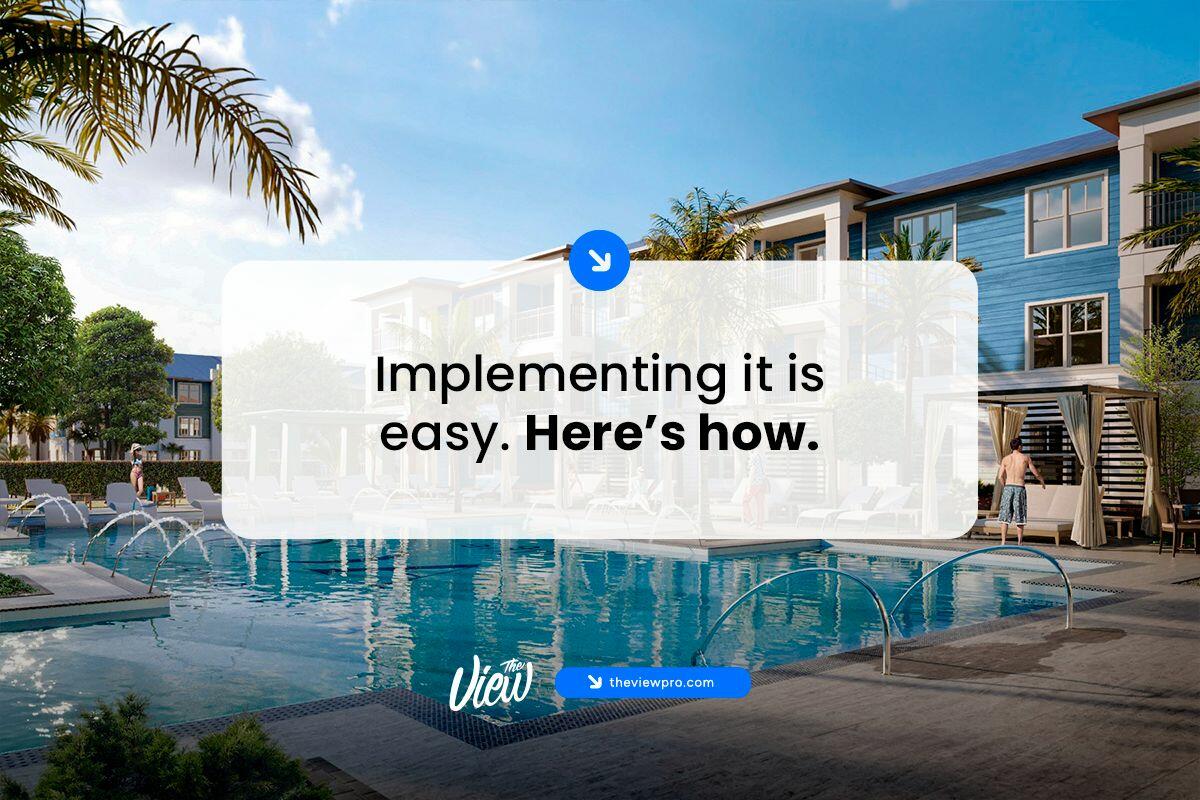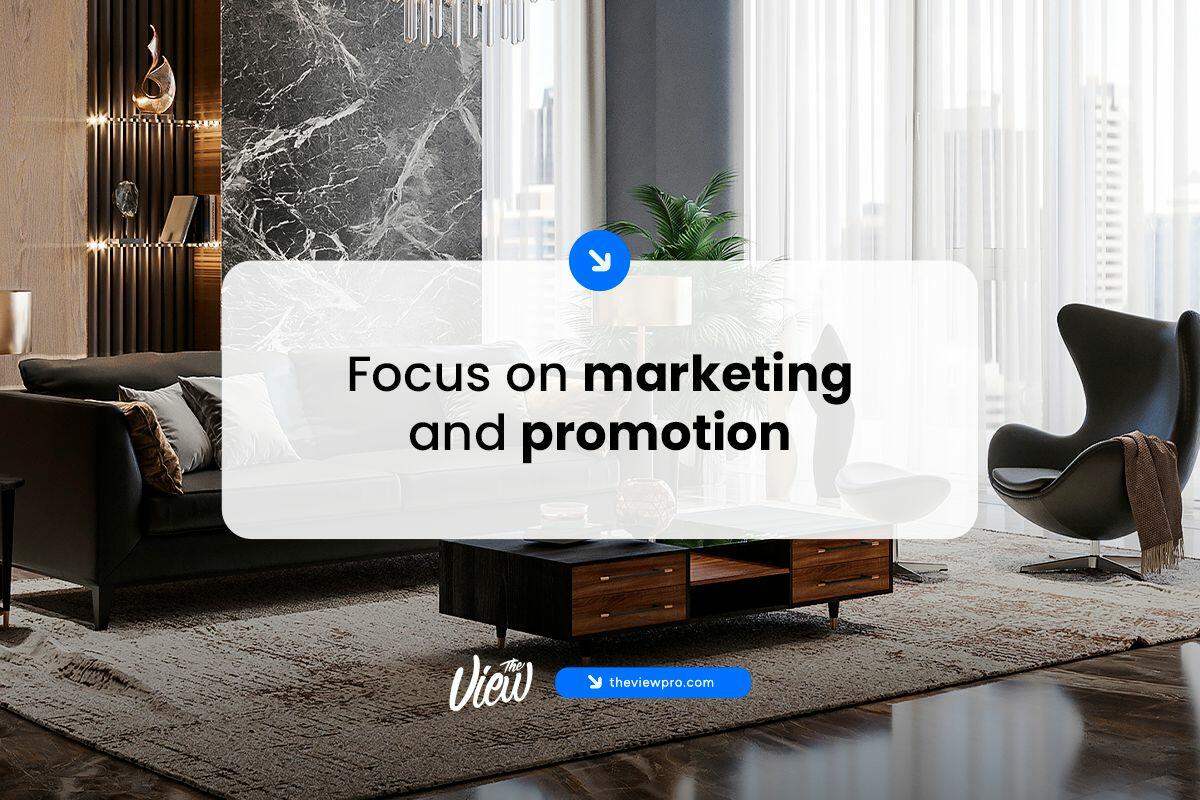First, what is virtual staging?
In simple terms, it’s a technology that uses real photographs or 3D models of a property to create photorealistic interiors and exteriors without any physical remodeling. Then, digital decorators will use a specialized software to add stylish furniture, lighting, and decorative elements to empty or worn-out rooms. This will enhance the appeal of the listing and help prospective buyers or investors better visualize the property’s potential.
Why is virtual staging so relevant today?
Growing visual demands: Clients looking to buy or rent real estate want to see their future home or office in its entirety.
Acceleration of digitalization: Mobile apps, online showings, and virtual tours have become the standard. Virtual Staging is a perfect fit for this trend.
High competition: In a crowded market, you need to stand out. And there’s no better way to do that than by showing your property early and effectively.
Virtual staging for multifamily vs. commercial properties: What’s the difference?
Virtual staging is used by residential and commercial properties but they both have different reasons why they use it. Here’s what we mean:
Size and layout: Multifamily units are smaller and easier to visualize, while commercial spaces need staging to define vast, empty areas.
Focus: Multifamily staging emphasizes style and comfort; commercial staging highlights functionality and adaptability.
Audience: Residential buyers seek personal appeal, while commercial clients prioritize practical layouts for business needs.

3 key advantages of virtual staging
Faster sales: Well-designed renders or retouched photographs help potential buyers make decisions more quickly. Instead of the usual 2D PDFs, you can show them a realistic view of their future home fully furnished.
Budget optimization: Most property managers blow their budget on furniture rentals, designer services, and logistics. Virtual Staging is more cost-effective and flexible when it comes to experimentation such as: changing color schemes, rearranging virtual furniture, and testing different concepts.
Presentation flexibility: Whether it’s a new build, resale property, or commercial real estate, you can select the unique interiors you want without being limited by warehouse inventory or physical decorations. You can even edit these interiors for specific buyers, and increase conversion rates.
Tools and technologies for virtual staging
Editing software
Adobe Photoshop and similar softwares: Great for a quick retouching and minor photo enhancements.
Specialized services (e.g., The View): Offer libraries of ready-made furniture and textures, simplifying the work for designers’ and marketers.
See examples from The View: https://resident-styles.my.canva.site/daglaucho0o
3D modeling and rendering
3ds Max, SketchUp, Blender: Professional software for creating photorealistic 3D models.
Render engines like V-Ray and Corona Renderer: Help achieve realistic lighting, reflections and shadows.
VR integration
Virtual Reality (VR): Let potential tenants virtually tour a fully generated space.

Implementing it is easy. Here’s how.
Preparing source materials
We take high-quality photographs or obtain accurate floor plans from your contractor.
We gather data about the target audience that influences the style and type of furniture you’ll add in the virtual environment.
Process setup
Our in-house team will finalize mock-up approvals.
We formulate clear requirements for the quality of visualization such as, resolution, detail level, and alignment with real-life proportions.
Choosing style and design
We take a look at current interior design trends that fit your project best (business class, luxury, commercial loft).
We give you multiple design variations for the same apartment to cater to different buyers. Choose from our library of furniture styles or customize your units the way you want.

Focus on marketing and promotion
Social media and websites
Instagram, Facebook, LinkedIn: Give your content a boost with “before/after” comparisons and stories of completed projects.
Website: Place a gallery of virtual interiors and client testimonials to build trust and simplify decision-making.
Targeting and retargeting
Configure ad campaigns that reach audiences already interested in your property.
Retarget to show refreshed virtual designs of recently viewed listings to returning users.
Online platforms and partnerships
List virtually staged properties on popular ILS, MLS, and marketplaces, backed by targeted advertising.
Collaborate with designers, decorators, and bloggers for striking collaborations and to reach new market niches.
Example case studies
Developer
A national developer introduced virtual staging at the foundation stage of construction. Using 3D visualizations, they showed buyers what the future apartments would look like with finished interiors and furniture. This led to a 20% increase in sales before the first buildings were even completed.
Real estate agency
A regional agency had to help their property standout in a crowded market. After implementing virtual staging and sharing quality images on their real estate portals, their time-on-market decreased by 30–40%.
Private investor
An investor specializing in rental properties virtually redesigned several studio apartments to appeal to a younger demographic. This staging solution helped increase the rental price by 15% with minimal digital staging costs.
Broker
A commercial broker used virtual staging to transform empty office spaces into coworking setups and fully furnished executive suites. By visually showcasing the potential of these large, vacant areas, the broker secured lease agreements 25% faster than average.
Property manager
A property manager overseeing multifamily units leveraged virtual staging to market both occupied and vacant units online. This strategy attracted more out-of-town renters and increased virtual tour requests by 30%, leading to faster tenant placement.
Commercial real estate firm
A commercial real estate firm used virtual staging to design retail spaces and open-plan offices tailored to specific businesses. By presenting multiple layout options for a single property, they closed deals 20% more efficiently, especially with first-time business owners.
Final thoughts
Virtual Staging isn’t just a unique technological trend, but an effective marketing tool. When a company commits to it and uses it to promote the property, they usually see their investment pays off fast. Now, developers, agencies, and investors can gain a significant competitive edge and boost leasings, even in a crowded market.


